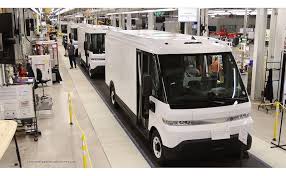Impact of GM CAMI Assembly Layoffs on Workers

Introduction
In recent weeks, General Motors (GM) has announced significant layoffs at its CAMI Assembly plant in Ingersoll, Ontario, which is raising concerns about the future of many workers in the auto manufacturing sector. This decision comes as companies in the industry navigate the challenges posed by shifting demand and supply chain issues. Understanding the implications of these layoffs is essential not only for affected employees but also for the broader economy of the region.
Details of the Layoffs
GM’s CAMI Assembly plant, which has a history of producing popular models like the Chevrolet Equinox, has reduced its workforce in response to declining sales and a strategic realignment towards electric vehicles (EVs). Sources indicate that over 800 workers will be laid off, an action attributed to a need for GM to adapt to changing market demands and accelerate its transition to EV production.
The layoffs have sparked discussions among labor unions and local government officials. Dave Cassidy, president of Unifor Local 88, expressed deep concerns about the impact on the workers and their families, emphasizing that job security is a critical issue for many communities that rely on the automotive industry. Furthermore, local economic health is heavily tied to the factory’s operations, which underscores the layoffs’ potential ripple effects.
Responses from Stakeholders
In response to the announcement, GM representatives have stated that the company remains committed to investing in its Canadian operations and the transition to EVs. Despite the layoffs, GM plans to continue supporting the remaining workforce with retraining programs and resources to help facilitate their transition into new roles, especially as electric vehicle production ramps up. This approach reflects an effort by GM to reposition itself in the auto industry while addressing the needs of its workforce.
Local and provincial officials are urging GM to consider alternative strategies to mitigate job losses, including a focus on retraining and skills development to prepare workers for the evolving automotive landscape. The provincial government has also indicated that they are prepared to support affected workers through employment services and financial assistance.
Conclusion
The recent layoffs at GM’s CAMI Assembly plant raise critical questions about the future of automotive jobs in Ontario and the transition to electric vehicles. While GM leaders express a commitment to adaptation and growth in new markets, the immediate impact on laid-off workers and their families is significant. As the industry evolves, it will be essential for all stakeholders to work collaboratively to support affected employees and bolster local economies to ensure a sustainable future for both workers and manufacturers in Canada.









